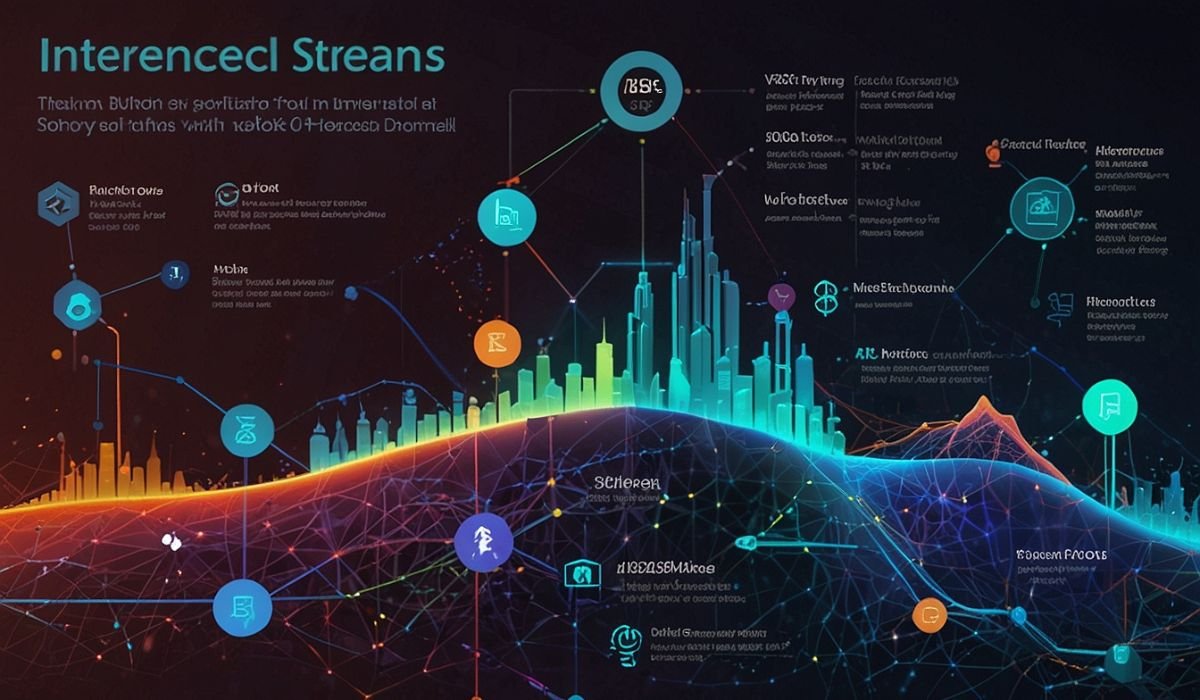Imagine putting your money to work, and watching it grow while it helps build solar farms, create affordable homes, or fund better schools. Sounds like a modern investor’s dream, right? This isn’t just wishful thinking – it’s the core mission of the White Oak Impact Fund. Forget the old choice between financial gain and doing good; this innovative fund is proving you can – and should – have both. Let’s dive into how this unique vehicle is making waves in the world of impact investing.
What Exactly is the White Oak Impact Fund? (And Why It Stands Out)
Think of the White Oak Impact Fund as a sophisticated financial tool with a conscience. Domiciled in Luxembourg for its robust regulatory framework and managed by seasoned credit specialists based in San Francisco, this fund operates primarily as a direct lender. That means it provides loans directly to carefully chosen companies and projects, bypassing traditional intermediaries.
But here’s the crucial differentiator: ESG isn’t an afterthought; it’s baked into the DNA. Every potential investment undergoes rigorous scrutiny not just for its creditworthiness and potential return, but for its demonstrable positive impact on the planet and people. The fund actively seeks out businesses demonstrating:
- Strong Environmental Stewardship: Think renewable energy developers, sustainable agriculture, or companies reducing waste and emissions.
- Tangible Social Responsibility: Focused on areas like creating quality jobs, advancing healthcare access, supporting education, or fostering diverse and inclusive workplaces.
- Sound Governance Practices: Ensuring transparency, ethical leadership, and accountability at the highest levels.
This integrated approach ensures that impact is intrinsic to the investment decision, not just a marketing bullet point.
The Engine Room: How the Fund Drives Impact & Return
The White Oak Impact Fund isn’t just talking the talk; it has a robust system to walk the walk. Here’s how its strategy works:
- Targeted High-Impact Sectors: The fund deliberately channels capital into sectors known for their potential to generate significant positive change:
- Renewable Energy: Financing solar, wind, geothermal projects accelerating the clean energy transition.
- Affordable Housing: Supporting developers building quality, accessible housing for underserved communities.
- Education & Workforce Development: Funding innovative schools, training programs, and edtech solutions improving access and outcomes.
- Sustainable Infrastructure: Investing in projects like energy-efficient buildings or clean water systems.
- Inclusive Finance: Supporting institutions providing capital to underserved small businesses or individuals.
- Rigorous Dual Due Diligence: Before a single dollar is lent, each opportunity faces a double-barreled assessment:
- Financial Deep Dive: Analyzing credit risk, cash flow projections, management strength, and market positioning with the precision expected of a top-tier credit fund.
- Impact Intensity Check: Evaluating the potential social and environmental outcomes using specific, measurable metrics. How many homes will be built? How much CO2 will be reduced? How many jobs created at what wage levels? This isn’t vague; it’s quantified.
- Collaborative Partnerships: The fund often works closely with borrowers, offering more than just capital. They might provide strategic guidance on scaling impact measurement or strengthening ESG practices, fostering long-term success for both the company and the fund’s mission.
- Relentless Impact Measurement & Management (IMM): The job isn’t done after the loan is made. The White Oak Impact Fund tracks performance against predefined impact targets using frameworks aligned with global standards (like the UN SDGs, IRIS+, or GIIN principles). This ongoing monitoring ensures accountability and allows for adaptive management.
The White Oak Impact Fund’s Dual-Lens Approach
| Focus Area | Financial Lens | Impact Lens |
|---|---|---|
| Core Activity | Direct Lending (Private Debt) | Targeted Impact Investing |
| Primary Goal | Competitive Risk-Adjusted Returns | Measurable Social & Environmental Benefits |
| Key Process | Credit Analysis & Underwriting | Integrated ESG Analysis & Impact Due Diligence |
| Target Sectors | Based on Credit Fundamentals & Opportunity | Renewable Energy, Affordable Housing, Education, etc. |
| Success Metrics | IRR, Loan Performance, Default Rates | CO2 Reduced, Homes Built, Jobs Created, SDG Alignment |
| Ongoing Focus | Portfolio Risk Management | Impact Measurement & Management (IMM) |
Also Read: Your Financial Compass in a Noisy World: Meet Ontpress.com
Why the “Impact” in Impact Investing Really Matters Here
The White Oak Impact Fund operates at a crucial intersection. It tackles the persistent myth that investors must sacrifice returns for impact. By applying disciplined credit strategies honed in mainstream finance to purpose-driven sectors, it aims to deliver competitive performance alongside tangible good.
This matters because:
- It Scales Solutions: Direct lending provides essential capital to impactful businesses that might struggle to access traditional bank financing or equity markets, especially in their growth phases.
- It Manages Risk Proactively: Integrating deep ESG analysis helps identify potential risks (like environmental liabilities, poor labor practices, or governance scandals) early, leading to more resilient investments. Think of it as an extra layer of risk mitigation.
- It Meets Growing Demand: Investors – from large institutions to individuals – increasingly demand their capital align with their values. Funds like this provide a credible, professionally managed avenue.
- It Drives Real-World Change: By focusing on measurable outcomes, the fund ensures capital is actively contributing to solving pressing global challenges, moving beyond just avoiding harm to actively doing good.
Who Stands to Benefit? (Hint: It’s More Than Just Investors)
The ripple effect of the White Oak Impact Fund‘s strategy extends wide:
- Investors: Access to a diversified private debt portfolio targeting competitive returns with the added benefit of knowing their capital generates positive, measurable impact.
- Borrowing Companies: Gain crucial growth capital from a lender who understands their mission and offers potential strategic partnership, often with more flexible terms than traditional banks focused solely on short-term returns.
- Communities: Benefit directly from the outcomes – cleaner energy, more affordable homes, better educational opportunities, quality job creation.
- The Planet: Sees tangible contributions through investments accelerating the transition to a low-carbon economy and promoting sustainable resource use.
The Road Ahead: Challenges & Opportunities
No strategy is without its challenges. Rigorously measuring social and environmental impact across diverse investments remains complex. Ensuring impact integrity while scaling the fund requires constant vigilance. Market fluctuations can affect any investment vehicle.
However, the tailwinds are strong. Regulatory shifts favoring ESG disclosure, massive capital flowing into sustainability themes, and increasing sophistication in impact measurement tools all create a fertile environment for funds like the White Oak Impact Fund. Their commitment to transparency and robust IMM practices positions them well to navigate these challenges and seize the significant opportunities in the growing impact lending space.
Your Next Steps: Aligning Capital with Conscience
The White Oak Impact Fund represents a compelling evolution in finance. It demonstrates that sophisticated investment strategies can be powerful catalysts for positive change. If you’re looking to move beyond screening out the bad and start actively investing in the good, here’s what to consider:
- Dig Deeper: Research the fund manager’s track record in both credit and impact investing. Look for transparency in impact reporting.
- Understand Your Fit: Impact funds vary. Does this fund’s specific focus areas (renewables, housing, education) align with your impact goals? Does its structure (private debt, Luxembourg-domiciled) suit your investment profile?
- Consult Professionals: Talk to your financial advisor. Discuss how impact investments like the White Oak Impact Fund could fit within your overall portfolio strategy and risk tolerance.
- Ask Tough Questions: Demand clarity on impact metrics, measurement methodologies, and how impact performance is actively managed alongside financial performance.
- Think Long-Term: Impact investing, like any meaningful change, often requires patience. Align your expectations with the fund’s long-term strategy.
The future of investing isn’t just about wealth accumulation; it’s increasingly about wealth with purpose. The White Oak Impact Fund offers a tangible pathway for capital to become a force for genuine progress, proving that doing well and doing good aren’t mutually exclusive – they can be powerfully intertwined. What impact do you want your money to make?
Share your thoughts on impact investing below! Have you explored similar funds? What impact areas matter most to you?
You May Also Read: Traceloans.com Credit Score: Your Key to Fairer Borrowing
FAQs
What type of fund is the White Oak Impact Fund?
It’s a Luxembourg-domiciled direct lending fund. This means it primarily provides loans directly to carefully selected companies and projects, focusing on delivering competitive financial returns alongside measurable positive social and environmental impact.
How does the fund integrate ESG?
ESG (Environmental, Social, Governance) analysis isn’t separate; it’s fully integrated into the core underwriting and due diligence process. Potential investments are rigorously assessed both for their financial health/credit risk and their demonstrable positive impact and ESG practices.
What kind of companies or projects does the fund invest in?
It targets high-impact sectors like renewable energy (solar, wind farms), affordable housing development, education and workforce training initiatives, sustainable infrastructure, and inclusive finance providers. The key is finding businesses within these sectors that meet strict financial and impact criteria.
How does the fund measure its impact?
The fund employs robust Impact Measurement and Management (IMM) practices. It sets specific, quantifiable impact targets aligned with frameworks like the UN Sustainable Development Goals (SDGs) or IRIS+ metrics (e.g., megawatts of clean energy generated, number of affordable homes built, tons of CO2 reduced, jobs created). It then tracks performance against these targets throughout the investment lifecycle.
Is this fund suitable for individual investors?
Typically, funds like the White Oak Impact Fund (often structured as private debt or alternative investments domiciled in places like Luxembourg) are targeted at institutional investors (pension funds, endowments, family offices) or qualified high-net-worth individuals due to their structure, minimum investment requirements, and liquidity profile. Individual investors should consult a financial advisor to determine suitability.
How does the fund balance financial returns with impact?
The core strategy is built on the belief that rigorous ESG integration and impact focus enhance long-term risk management and financial resilience. By lending directly to mission-aligned companies in essential sectors using disciplined credit analysis, the fund aims to achieve competitive, risk-adjusted returns while generating measurable positive outcomes. It avoids seeing impact as a return drag.
Who manages the White Oak Impact Fund?
The fund is managed by a San Francisco-based credit specialist team with expertise in both direct lending and impact investing. This team brings the necessary financial rigor and deep understanding of impact metrics to execute the fund’s dual objectives effectively.










